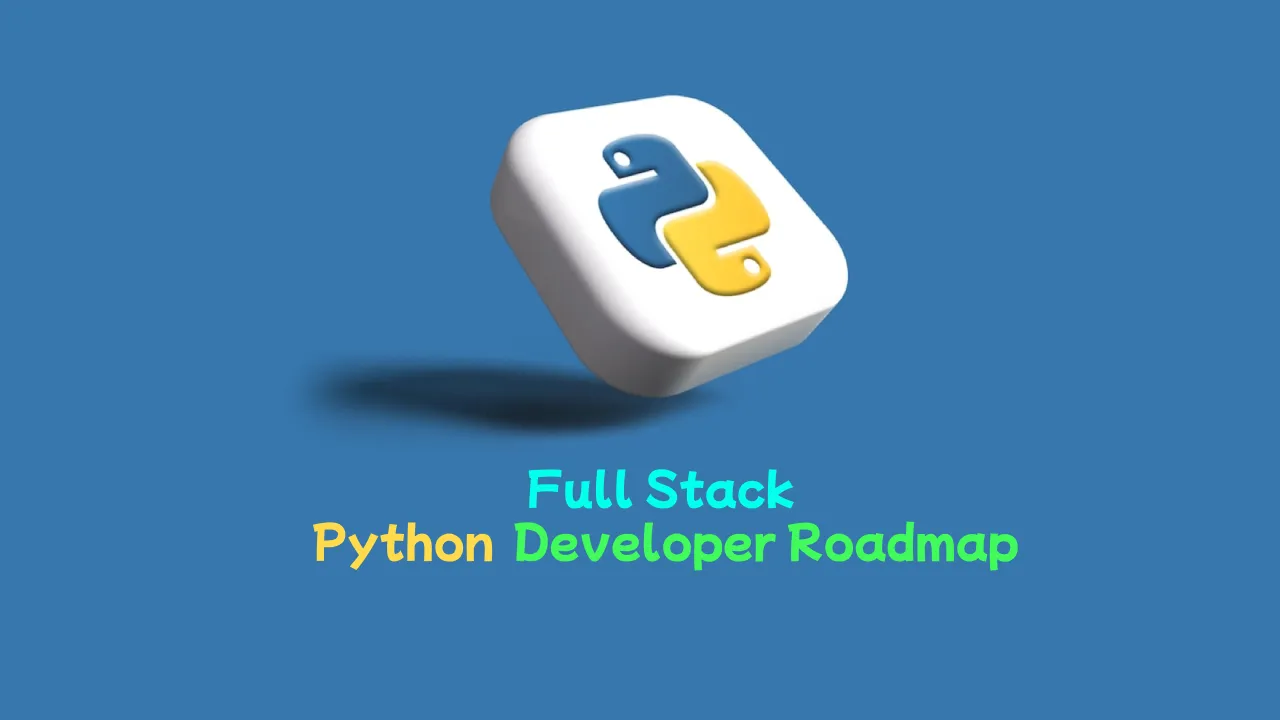Python has emerged as a powerhouse in the world of programming, known for its simplicity, versatility, and a vast ecosystem of libraries and frameworks. With Python's widespread adoption for both front-end and back-end development, the role of a Full Stack Python Developer has become increasingly crucial. These developers possess the skills to create end-to-end web solutions, from crafting responsive front-end interfaces to building robust back-end systems.
In this article, we embark on a journey through the Full Stack Python Developer Roadmap, exploring the essential tools, languages, frameworks, and best practices that encompass the full-stack development landscape. Whether you're an aspiring developer looking to enter the field or a seasoned programmer aiming to expand your skill set, this roadmap will serve as your compass to navigate the ever-evolving world of full-stack Python development.
01. Understanding Full Stack Development
- Defining the Role of a Full Stack Python Developer
- Advantages of Being a Full Stack Developer
- Key Responsibilities and Roles
- Front-End Development with Python
02. Introduction to HTML, CSS, and JavaScript
- Python-based Front-End Frameworks (e.g., Flask, Django)
- Responsive Web Design
- Handling User Interfaces with Python
- Back-End Development with Python
03. Server-Side Programming with Python
- Python Web Frameworks (e.g., Flask, Django)
- Databases and Data Management (SQL and NoSQL)
- Building RESTful APIs and GraphQL Services
- Database Management
04. Relational Databases
- NoSQL Databases (e.g., MongoDB, Redis, PostgreSQL, MySQL)
- Object-Relational Mapping (ORM)
- Database Design and Optimization
- Version Control and Collaboration
05. Utilizing Git and GitHub for Collaboration
- Collaborative Development Workflows
- Best Practices in Code Review
- DevOps and Deployment
06. Implementing Continuous Integration and Continuous Deployment (CI/CD)
- Cloud Platforms (e.g., AWS, Azure)
- Containerization with Docker
- Automating Deployment Processes
- Front-End Build Tools and Libraries
07. Task Runners (e.g., Grunt, Gulp)
- Package Managers (e.g., pip, npm)
- Webpack and Asset Bundlers
- Security Best Practices
08. Web Application Security Fundamentals
- Authentication and Authorization Techniques
- Protecting Sensitive Data
- Security Tools and Practices
- Testing and Quality Assurance
09. Types of Testing (Unit, Integration, End-to-End)
- Implementing Test-Driven Development (TDD)
- Testing Frameworks (e.g., pytest)
- Automation and Continuous Testing
- Performance Optimization
10. Front-End Performance Enhancement
- Back-End Performance Tuning
- Monitoring and Profiling Tools
- Leveraging Caching and Content Delivery Networks (CDNs)
- Microservices and Serverless Architecture
11. Understanding Microservices vs. Monolithic Architectures
- Building Scalable Applications
- Serverless Computing with AWS Lambda and Azure Functions
- Continuous Learning and Staying Updated
12. Exploring Blogs, Forums, and Online Communities
- Participating in Conferences and Meetups
- Contributing to Open Source Projects
- Enrolling in Online Courses and Tutorials
Conclusion:
Full Stack Python Developer is a rewarding journey that empowers you to create comprehensive web solutions. This roadmap provides a structured path to acquire the skills and knowledge needed to excel in this role. As you progress through each step, you'll gain a deeper understanding of both front-end and back-end development, enabling you to build robust and dynamic web applications. The ever-evolving tech landscape requires continuous learning, and staying updated with the latest trends and technologies is essential for success. By following this roadmap and embracing a growth mindset, you can embark on a fulfilling career as a Full Stack Python Developer, contributing to the creation of innovative and impactful web solutions.

Comments
Post a Comment